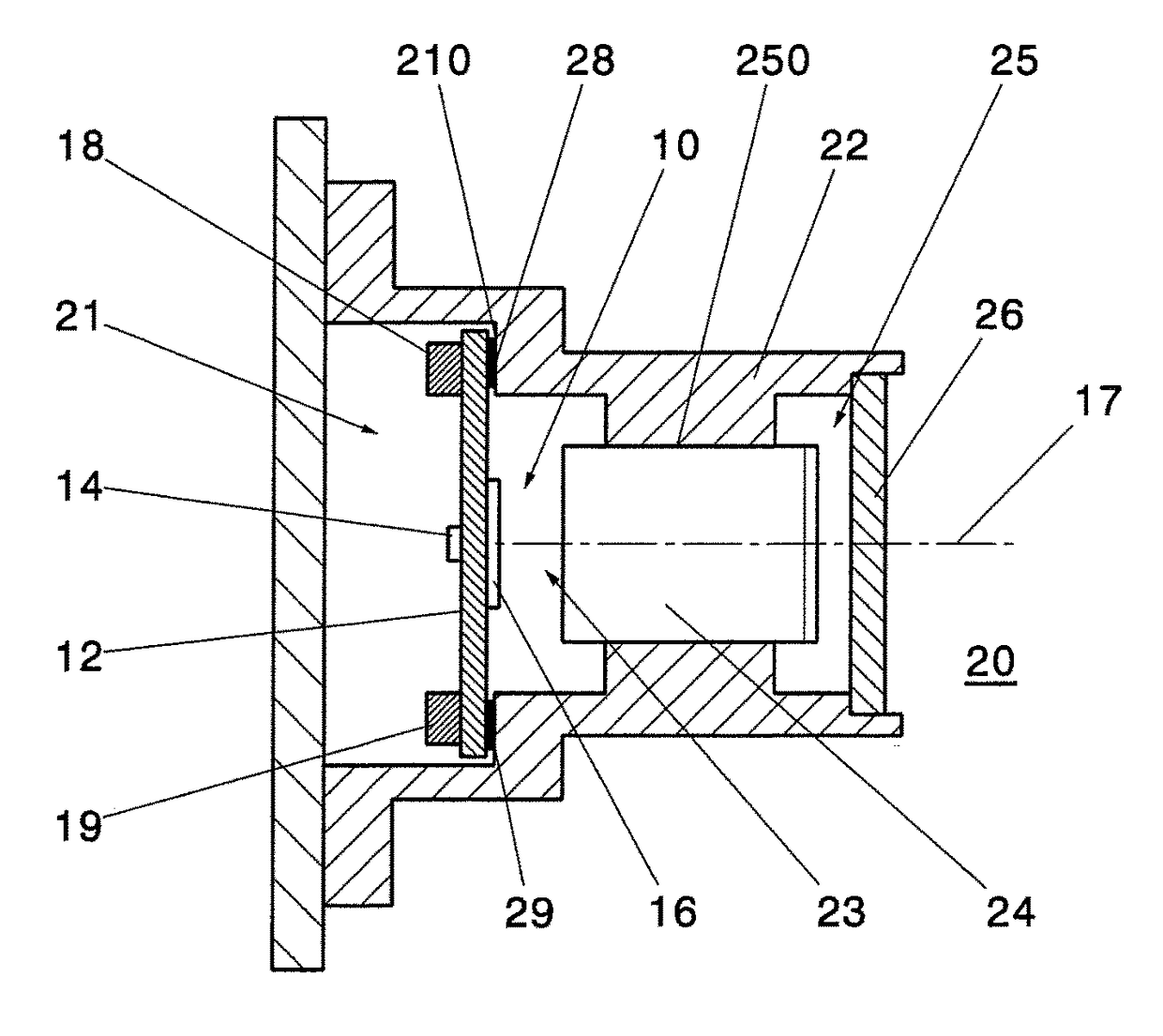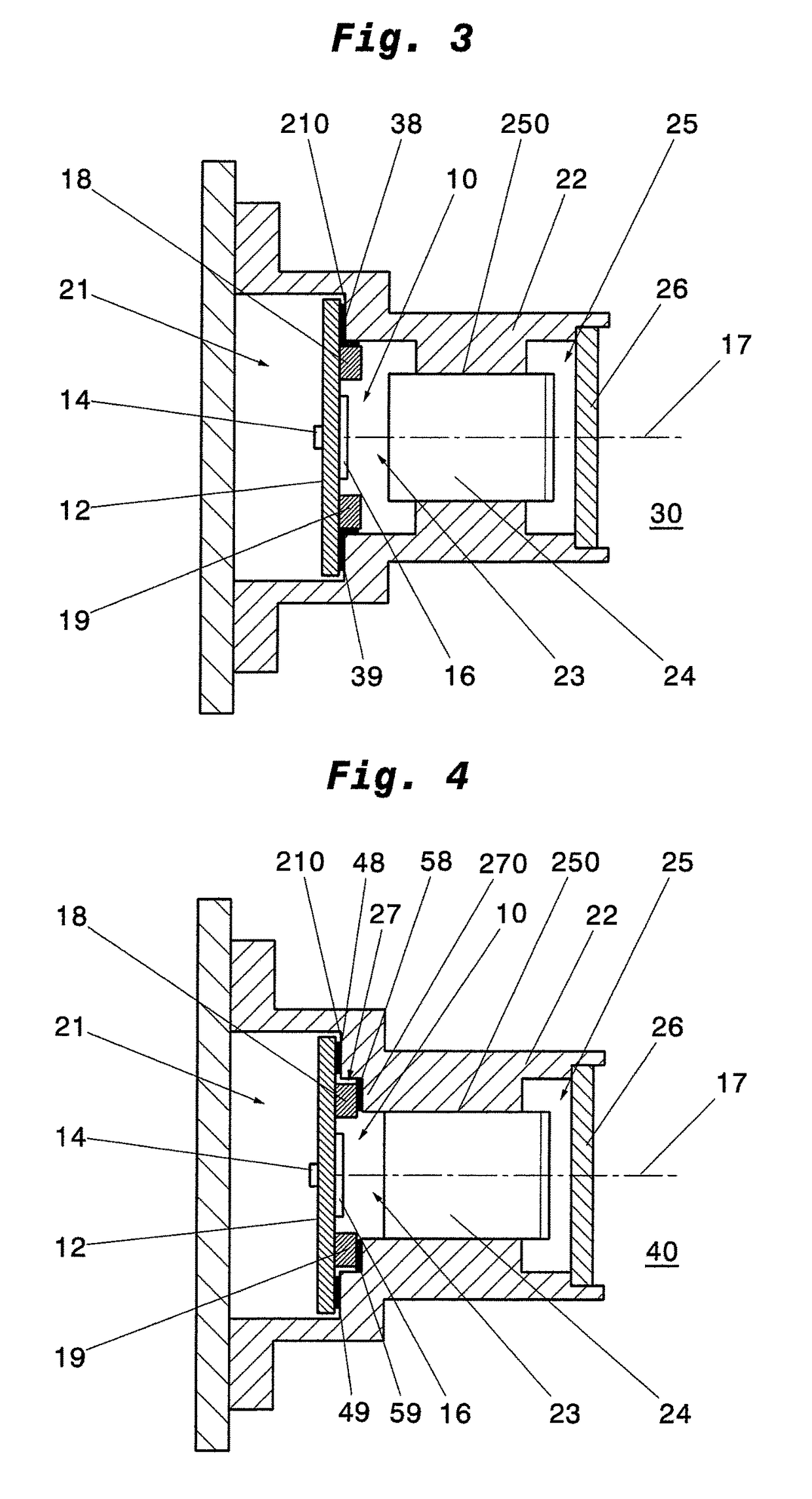Camera with heating element
a technology of heating element and camera, which is applied in the field of cameras with heating elements, can solve the problems of direct contact with the surrounding environment, adverse effects on camera functions, and exposure of cameras, and achieve the effects of avoiding frost and condensation, being durable and reliably used outdoors, and resisting frost and condensation
- Summary
- Abstract
- Description
- Claims
- Application Information
AI Technical Summary
Benefits of technology
Problems solved by technology
Method used
Image
Examples
Embodiment Construction
[0040]FIG. 1 shows a first embodiment of a camera 20 according to the present disclosure. The camera 20 is provided with a housing 22 including cylindrical inner portions 21, 23, 25 having different diameters. A group of circuit boards having a single circuit board 10, which is arranged in the inner portion 21, and an optical element 24, which is arranged in the inner portion 25 whose diameter is smaller than the diameter of inner portion 21, are arranged within the housing 22. The inner portion 25 is stepped with regard to the inner portion 23 and has a housing inner flange surface 210. The circuit board 10 is attached to a housing inner flange surface 210. The optical element 24 is, for example, a lens with lens system and is screwed into the housing 22 at the inner portion 25, whose diameter is smaller than the diameter of inner portion 23, by means of a thread 250. On the object-side, the housing 22 is sealed in an airtight and / or watertight manner by a further optical element i...
PUM
 Login to View More
Login to View More Abstract
Description
Claims
Application Information
 Login to View More
Login to View More - R&D
- Intellectual Property
- Life Sciences
- Materials
- Tech Scout
- Unparalleled Data Quality
- Higher Quality Content
- 60% Fewer Hallucinations
Browse by: Latest US Patents, China's latest patents, Technical Efficacy Thesaurus, Application Domain, Technology Topic, Popular Technical Reports.
© 2025 PatSnap. All rights reserved.Legal|Privacy policy|Modern Slavery Act Transparency Statement|Sitemap|About US| Contact US: help@patsnap.com



